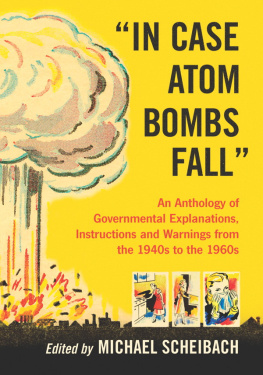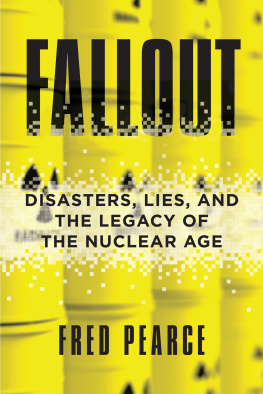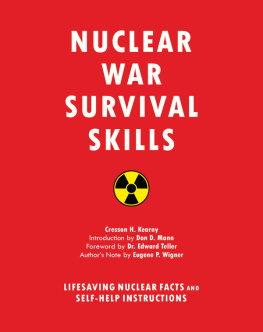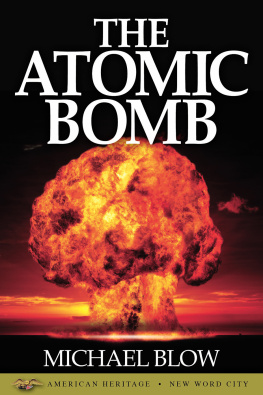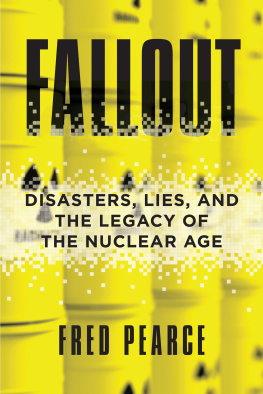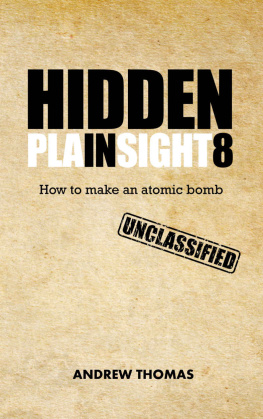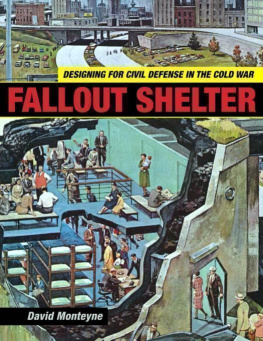
Table of Contents
ALSO BY MICHAEL SCHEIBACH
Atomic Narratives and American Youth:
Coming of Age with the Atom, 19451955
(McFarland, 2003)
LIBRARY OF CONGRESS CATALOGUING-IN-PUBLICATION DATA
In case atom bombs fall : an anthology of governmental explanations, instructions and warnings from the 1940s to the 1960s / edited by Michael Scheibach.
p. cm.
Includes bibliographical references and index.
ISBN 978-0-7864-4541-7
1. Civil defenseUnited StatesHistory20th centurySources.
2. Nuclear warfareSocial aspectsUnited States.
3. Cold WarSocial aspectsUnited States.
I. Scheibach, Michael, 1949
UA927.I5 2009 363.350973'09045dc22 2009025965
British Library cataloguing data are available
2009 Michael Scheibach. All rights reserved
No part of this book may be reproduced or transmitted in any form or by any means, electronic or mechanical, including photocopying or recording, or by any information storage and retrieval system, without permission in writing from the publisher.
On the cover: main image Survival Under Atomic Attack, 1950 (National Security Resources Board, Civil Defense Office); three insets Just in Case Atom Bombs Fall, 1951 (Civil Defense Office of Denver)
McFarland & Company, Inc., Publishers
Box 611, Jefferson, North Carolina 28640
www.mcfarlandpub.com
For Archer, Scarlett, and my future grandchildren.
May they and their generation grow up in a world at peace.
Introduction
Americans welcomed the news with celebratory joy and quiet relief. The war, proclaimed President Harry S Truman, had come to an end with receipt of Emperor Hirohitos unconditional surrender. What began on Sunday morning, December 7, 1941, with a Japanese attack on Pearl Harbor, a little-known naval base somewhere in the Pacific Ocean, concluded on Tuesday evening, August 14, 1945, eight days after a specially equipped B-29 Superfortress dropped a new weaponan atomic bombon the Japanese city of Hiroshima. The bomb killed 70,000 people instantly, many completely vaporized from the heat of the blast, which reached 5400 degrees Fahrenheit at ground zero.
In a statement released the day after the annihilation of Hiroshima, President Truman told the country that Japan had been repaid many fold for its unprovoked assault on Pearl Harbor. He also stressed the necessity of the United States to guard the secrets of the atomic bomb in order to protect us and the rest of the world from the danger of sudden destruction. The Atomic Agewith all its repercussionshad begun.
Shortly after the U.S. dropped a second atomic bomb on Nagasakithree days following HiroshimaTime magazine proclaimed this all-powerful force had given civilization a brutal challenge to save itself from destruction. Noted journalist and editor Norman Cousins wrote in the August 18 issue of Saturday Review of Literature, Whatever elation there is in the world today because of final victory in the war is severely tempered by fear. Yet for a country exhausted by war, welcoming home GIs, rekindling family ties, and retooling the economy from war production to consumer goods took precedence. Even though the atomic bomb had, most Americans acknowledged, escalated the potential of an eventual Armageddon, the fact remained that the United States had a monopoly over the bomb, at least for now.
During the late 1940s, government and scientific rhetoric remained focused on the unlimited potential and apocalyptic power of the atom. On the one hand, the atom promised breakthroughs in such areas as energy and medicine; on the other hand, the atom threatened to destroy civilization if a third world waran atomic warwere to occur. The catch phrases during this period were one world or none and peace ... or else.
Historian William Graebner has called the late 1940s the age of doubt, resulting in large part from the uncertainties and trepidations revolving around the atomic bomb, especially the potential of the Soviet Union becoming an atomic power. Congress confronted the countrys concerns with passage of the National Security Act of 1947, which created the National Security Resources Board and its Civil Defense Office. Within two years, however, what had been a future possibility became a stark reality with the Soviet Unions successful test of its own atomic bomb in September 1949. The Atomic Age, which had begun just four years earlier, became even more threatening as the Cold War solidified into two major adversarial powers. The monopoly had ended, and the federal government had to make sure all Americans not only understood the new Soviet threat, but also had the requisite knowledge and skills to survive an atomic attack and, perhaps more important, the ability and commitment to ensure the countrys future in the aftermath of atomic destruction.
Congress again acted by passing the Federal Civil Defense Act in 1950. The following year, President Truman created the Federal Civil Defense Administration, which immediately began disseminating information about the nature of the atom, descriptions of the effects of an atomic blast, instructions for surviving an atomic bomb, and warnings about the potential destructive power of an atomic attack on American cities.
The present work provides a sampling of publications issued by federal, state, and local government agencies and civil defense organizations between 1950 and the early 1960s. These publications span the country, from New York to Oregon, Alabama to Wisconsin. Illustrations featured on the following pages offer a visual glimpse of both the serious and humorous sides of civil defense; and the original punctuation and typographic styles (e.g., boldface, italic, and ALL CAP text) are used to maintain the emphasis placed on specific warnings and instructions. Some of the publications are one- or two-page brochures or posters that are best reproduced as full-page facsimiles, rather than as text. In the table of contents, an italicized title denotes such cases. Editorial notes in italics precede each piece, and provide some specific background and context. The book is arranged thematically, with sections covering the impact and power of the atomic bomb, radioactive fallout, women and the home, the importance of being prepared, civil defense in schools, fallout shelters, evacuation plans, and, finally, the call for peace or ... else.
These civil defense publications offer a unique insight into the governments well-organized efforts to inform, educate, and prepare all Americans for the potentiality of nuclear war. At the same time, they also reveal contemporary social attitudes, particularly relating to women and the family. For example, car pools were encouraged not to save gas, but rather to ensure that family members at home had an automobile available to evacuate if the warning signals sounded. The car represented four wheels to survival. Publications reminded women to keep their homes and yards clean of debris in order to minimize fires resulting from an atomic blast, and to stock foods and emergency supplies for their home fallout shelters. As one pamphlet said, The home is the basic unit of the communityand the basic unit on which defense of the home front must be built. Whether you are a housewife, secretary, business executive, or nurse, civil defense looks to you, as a woman, to take an active role in protecting your home. No one else can do that job for you.... Getting America prepared on the home front is a responsibility that falls in large part on the shoulders of all American women.
Next page
